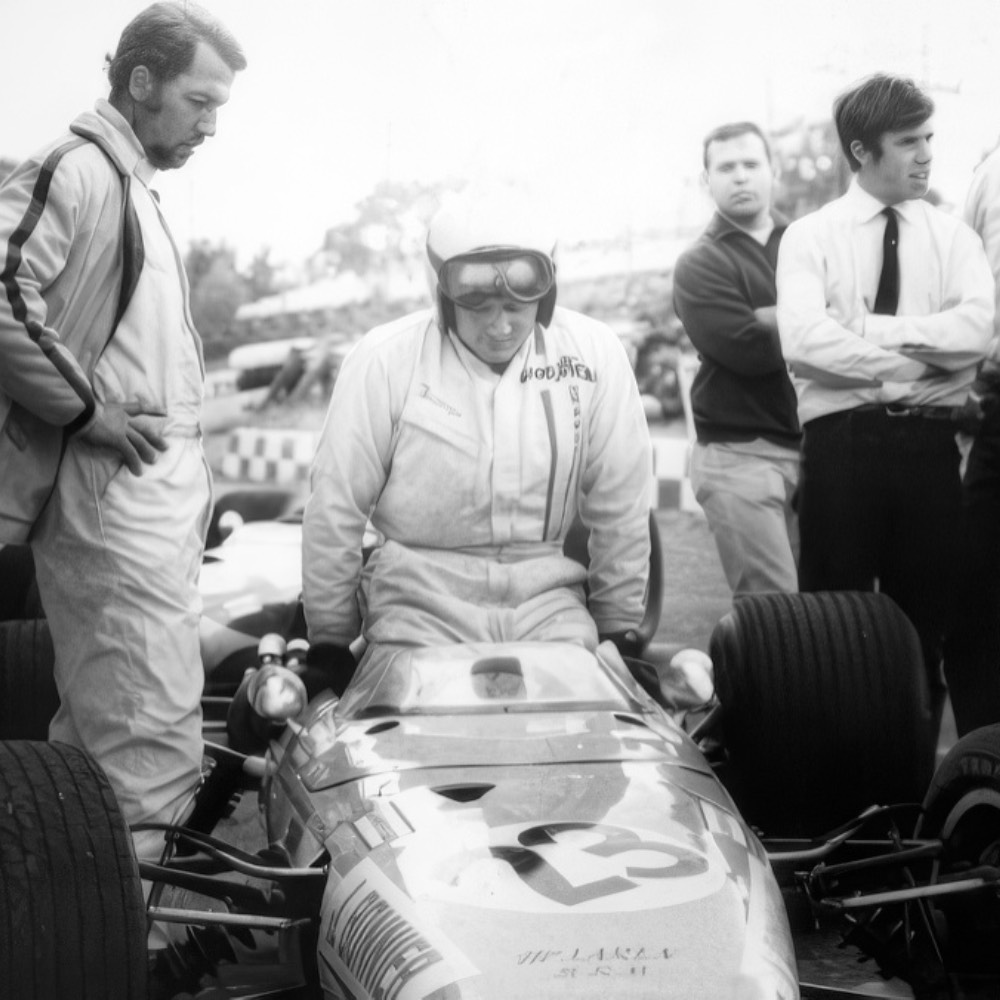
Jo Bonnier
Career Statistics
Biography
Joakim 'Jo' Bonnier (31 January 1930 - 11 June 1972) was a Swedish racing driver who competed in Formula One from 1956 to 1971, winning the 1959 Dutch Grand Prix to become Sweden's first Formula One Grand Prix winner, and serving as chairman of the Grand Prix Drivers' Association while campaigning tirelessly for improved safety in motorsport, before dying in a tragic accident at the 24 Hours of Le Mans. Born in Stockholm on 31 January 1930 into the wealthy and influential Bonnier family—major figures in Swedish publishing—Jo grew up in privileged circumstances. His father, Gert, was a professor of genetics at Stockholm College, while extended family members controlled one of Scandinavia's largest publishing empires.
Despite his family's hopes that he would become a doctor, and his own early aspirations to enter the family publishing business, Bonnier was drawn irresistibly to motorsport. He attended Oxford University for a year studying languages, demonstrating the intellectual curiosity that would later make him fluent in six languages, then went to Paris intending to learn about publishing, but racing increasingly dominated his interests. Bonnier began competitive motorsport at age 17, racing an old Harley-Davidson motorcycle in Sweden. From his comfortable background, this Swedish driver built a mighty reputation as an ice-racer in the early 1950s, driving an Alfa Romeo Disco Volante on frozen lakes—a peculiarly Scandinavian form of motorsport that developed exceptional car control skills.
This ice-racing success provided the foundation for Bonnier's transition to international circuit racing. Bonnier entered Formula One in 1956, making his debut at the Italian Grand Prix at Monza driving a Maserati. He spent 1957 and 1958 primarily driving privately-entered Maseratis, usually under the Scuderia Centro Sud banner and sometimes under his own Ecurie Bonnier team. These years provided valuable experience though limited results, as privateer Maserati entries struggled against works teams from Ferrari and Vanwall.
Bonnier's greatest Formula One achievement came at the 1959 Dutch Grand Prix at Zandvoort, where he delivered a stunning victory for BRM. The British Racing Motors team had been plagued by chronic unreliability throughout the 1950s, earning a reputation as the sport's greatest underachievers despite significant financial backing. At Zandvoort, the BRM finally worked reliably for an entire race, and Bonnier drove brilliantly to secure victory, becoming both BRM's first World Championship winner and Sweden's first Formula One Grand Prix winner. The victory marked a watershed moment for Swedish motorsport and made Bonnier a national hero.
In 1960, Bonnier won the German Grand Prix driving a Porsche 718, though this was a Formula Two event held as the Grand Prix in preparation for the 1961 rule change, so it didn't count toward the World Championship. After Porsche withdrew from Grand Prix racing at the end of 1962, Bonnier joined the Rob Walker Racing Team, driving the privateer team's cars for three seasons. Throughout his 15-year Formula One career, Bonnier competed for Maserati, Scuderia Centro Sud, BRM, Porsche, Rob Walker Racing, and his own Ecurie Bonnier team, among others. Despite his 1959 victory, Bonnier never drove regularly for top-tier works teams, with only occasional replacement drives for Lotus, Brabham, and Honda.
He remained competitive through the 1960s, though further victories eluded him, and he continued racing well into the 1970s, demonstrating remarkable longevity in an increasingly dangerous sport. Beyond his driving, Bonnier became one of Formula One's most important figures through his safety advocacy. He served as chairman of the Grand Prix Drivers' Association (GPDA) from 1963 until his death in 1972, making him the organization's longest-serving chairman during its most crucial period. Throughout the 1960s, as driver deaths became tragically common, Bonnier campaigned relentlessly for improved safety standards, better circuit facilities, and enhanced medical services at races.
His multilingual abilities and aristocratic background gave him credibility with circuit owners and racing authorities, while his years of racing experience meant drivers trusted his judgment. Bonnier's safety crusade made numerous improvements to Formula One, though progress was frustratingly slow. Outside Formula One, Bonnier competed extensively in sports car racing, entering the 24 Hours of Le Mans 13 times from 1957 to 1972. His best Le Mans result came in 1964 when he finished second alongside Graham Hill, driving a Ferrari 330P, narrowly missing victory at motorsport's most prestigious endurance race.
In 1970, he won the European 2-Litre Sports Car Championship driving a Lola T210, securing the drivers' title with 48 points and demonstrating his continued competitiveness in his forties. On 11 June 1972, during the Le Mans 24 Hours race, Jo Bonnier's life ended in the type of accident his safety work had sought to prevent. In a horrific collision with Swiss amateur driver Florian Vetsch, Bonnier's Lola T280 flew over the Armco barriers and into the trees behind them, killing him instantly at age 42. The man who had spent nearly a decade crusading for circuit safety became another victim in a generation of racers who paid the ultimate price.
The tragic irony of Bonnier dying at Le Mans, after years fighting for the safety improvements that might have saved him, was not lost on the motorsport community. His funeral in Sweden drew mourners from throughout international motorsport, reflecting the enormous respect and affection in which he was held. Jo Bonnier's legacy extends far beyond his single Grand Prix victory, residing instead in his tireless safety advocacy that helped transform Formula One from the deadly era of the 1960s toward the improved safety standards that would eventually emerge in later decades.